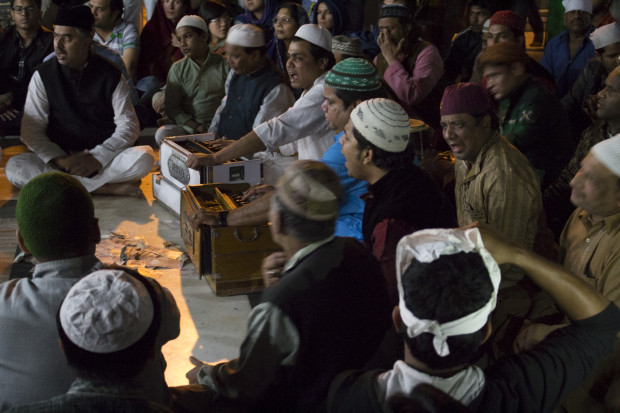NEW DELHI —What a day! At its start, most of us woke up recovering from what can only be described as traumatic stress from having to submit our master’s theses. Now, as the day closes, our student life at Columbia University seems far more distant from us than its geographic 7,300 miles. Having only spent a few hours in New Delhi, and yet witnessing and experiencing so much, I can’t imagine what the coming 10 days hold.
By some stroke of luck, all 14 students arrived at Kennedy International Airport on time. And though an airport currency exchange clerk with a fastidious obsession for counting may have slowed some students down, Air India Flight 102 nonstop to New Delhi took off without a hitch.
The 15-hour flight was happily uneventful, and we tried passing the time through a variety of entertainment measures, some provided by the airline, others cultivated amongst us. Alice flipped through movie options before settling on “All About Eve,” while our teaching fellow, Aarti Virani, indulged in a Bollywood flick. Nadim and Sara (somehow) managed to film a GIF of the sunrise over nearly an hour, while I became best friends with the flight attendant after she began serving me two mini bottles of wine at a time.
Upon landing at Indira Gandhi International Airport, we met Professor Trivedi, who came with a neon green charter bus that had a pink stripe across its side and a giant label that said “TOURIST” on its windshield. It was a bit more conspicuous then we would have hoped for, but it comfortably brought us to our hotel without delay where we checked in and dropped off our luggage. We hit the ground running: we left within the hour to visit what would be the first of many religious holy sites on our trip, the Nizamuddin Dargah.
The Nizamuddin Dargah, or Nizamuddin Shrine, is home to the tomb of one of the most famous saints in Sufi Islam, Nizamuddin Auliya. Sufism emphasizes the mystical and seeks to find the truth of God’s love by establishing a direct, personal experience with the divine. When we arrived at the Dargah, that personal experience was articulated through the music and swaying.
After navigating a labyrinthine series of streets and footpaths crowded with Muslim vendors and shops, we arrived in a small open space in front of the shrine where a tightly packed crowd surrounded a handful of musicians, singers, and two of the shrine. Two musicians sat and played a harmonium, an instrument resembling an accordion placed on the ground, while the vocalist sang the devotional songs—called Qawwalis—written by the Sufi poet and musician buried near the central shrine, Amir Khusrow. Despite not using microphones, their passionate voices traveled across the crowd over the rhythmic sounds of their traditional drums. Meanwhile, the two caretakers of the shrine collected donations in appreciation of the Qawwals’, or singers’, musical genius. It was the hereditary caretakers’ responsibilities to mediate the monetary gifts: they dispersed the money as they saw fit. They could keep it for themselves, use it to maintain the shrine, or give it to the musicians. Because the music that night was impeccable, it looked like most (if not all) of the donations were given to the musicians. After witnessing this vibrant display of worship, the Sufi’s use of music to become one with the divine makes all the more sense.
It was a beautiful experience. The crowd sat and undulated to the music together as if they were one—many took up singing the poems of Khusro, too. Two or three older men walked around the crowd flapping fabric to bless those in attendance. Men and women, adults and children, all sat together and unsegregated taking in the beauty of the music to become closer to God’s love. And this was only the first night.
When we returned to our hotel, we were reunited with two of our classmates, Jenna and Rutwij, who arrived in India four days before the rest of us to attend a wedding. The only person missing from our group was Professor Goldman, who has taught the class, “Covering Religion” for over a decade, and traveled with our predecessors in those classes to other nations and holy sites around the world. Professor Goldman has been delayed in New York, but we look forward to meeting him in the coming days. Over the past seven weeks we’ve spent in New York, he and Professor Trivedi have taught us the nuances and history of India’s rich religious heritage, and now all of us are looking forward to witnessing these traditions first hand.

Dear Nathan,
We are delighted to be able to read your Daily Dispatch 1. We certainly hope to see more. Your reporting is spot on and allows us to experience your fascinating adventures almost first-hand. Thank you for sharing!
We have met you, with your family at OLPH and, possibly at St. Martha’s Pantry, where we worked to feed the people in need. Have a wonderful time on this pilgrimage.
Jim and Pollee Gough
Look forward to following your adventures in India.
Beautiful writing, wonderfully leading us from the traumatic beginnings of theses deadlines to the promising sunrise, to the music that connects our very souls. Thanks!